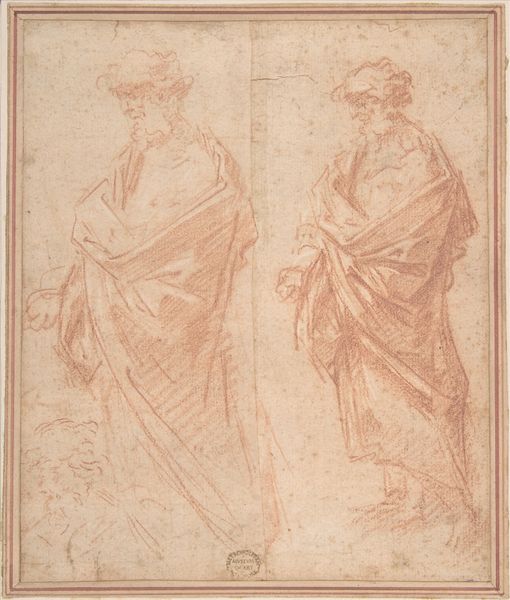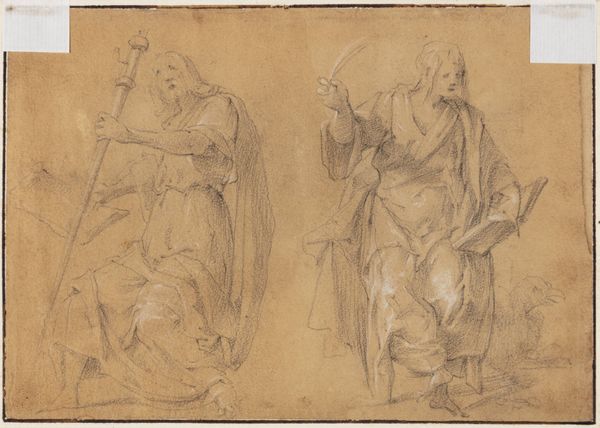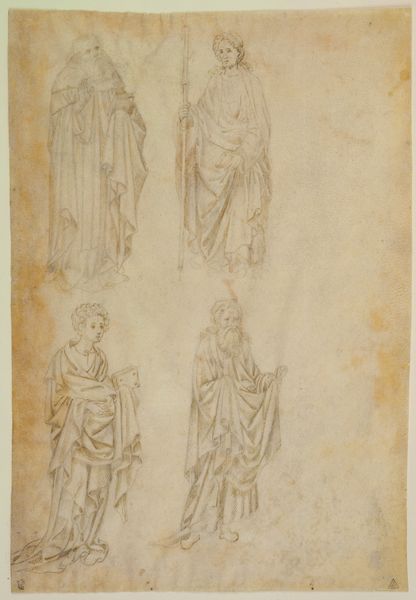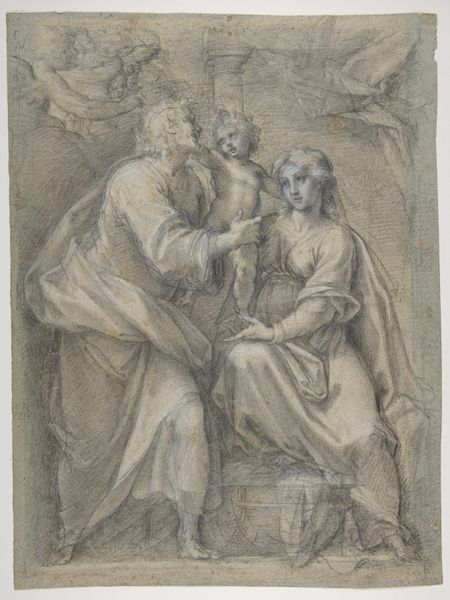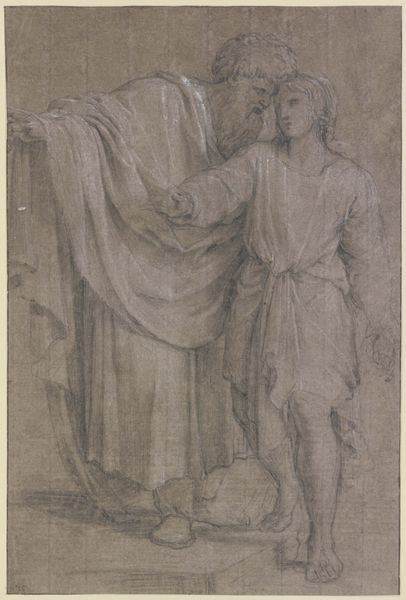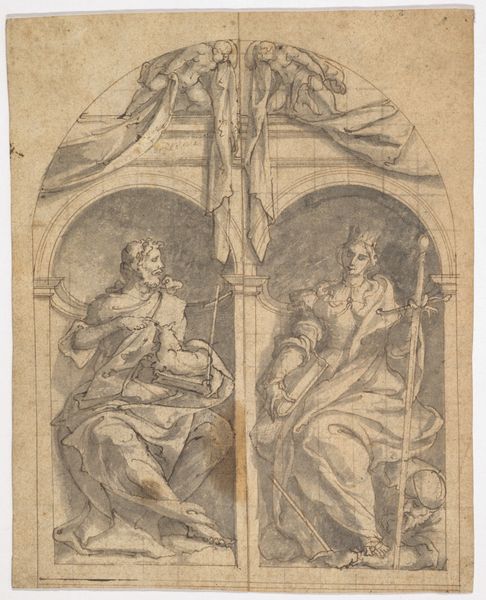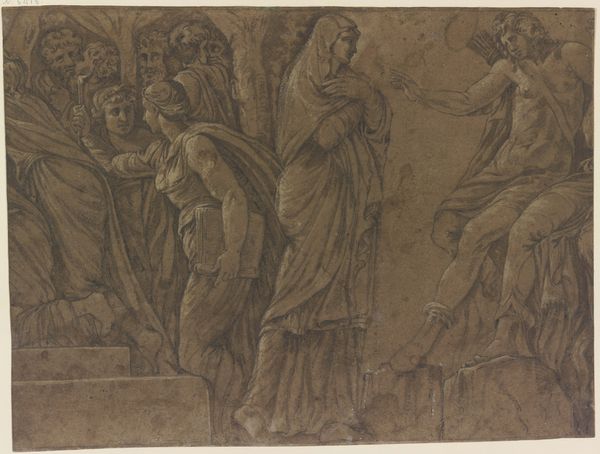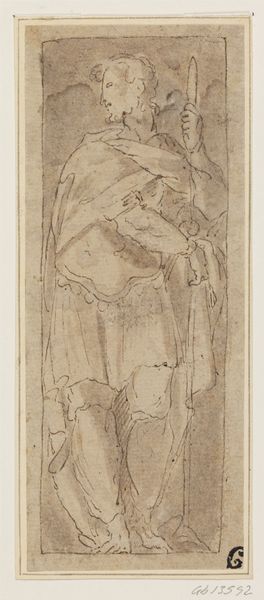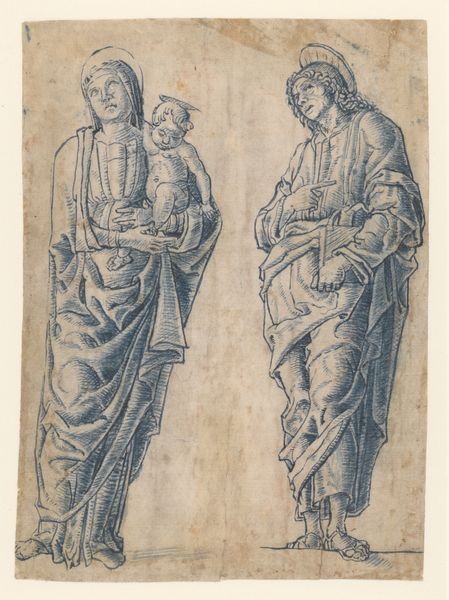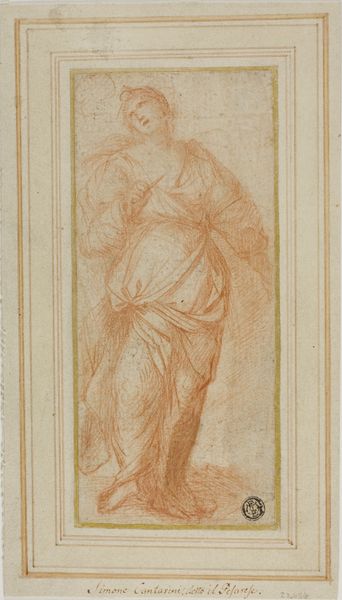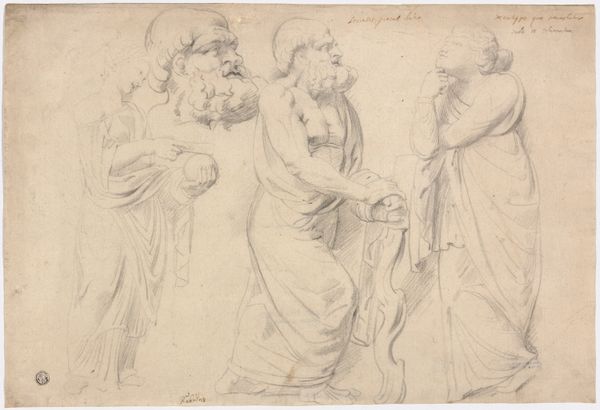
drawing, print, paper, chalk, charcoal
#
portrait
#
drawing
# print
#
etching
#
charcoal drawing
#
mannerism
#
figuration
#
paper
#
11_renaissance
#
chalk
#
charcoal
#
history-painting
Dimensions: 285 × 100 mm
Copyright: Public Domain
Curator: These are two panels sketched by Pellegrino Tibaldi around 1545-1550, both titled "Standing Prophet or Apostle," held here in the Art Institute of Chicago. They're rendered in chalk and charcoal. What do you make of them? Editor: Melancholy. They exude such quiet solemnity. The heavy robes, the veiled figure, the gaze turned inward. It speaks volumes, doesn’t it, about power, religion, but also… vulnerability. Curator: Absolutely, they almost hum with that energy. Tibaldi was known for his Mannerist style, and you see that here in the exaggerated musculature and elongated forms. They're biblical figures, no doubt, but there's also something intensely human about them. I feel their weight, their worries, their wisdom perhaps, etched in the charcoal lines. It’s like looking into a mirror. Editor: And what do you suppose those worries entailed? Considering the turbulent times, with the Reformation and religious wars raging, how might that context have influenced Tibaldi's hand? Were these figures conceived as pillars of strength or rather emblems of a crumbling old order? Curator: Hmmm, interesting point! It does push us to wonder if Tibaldi was hinting at anxieties bubbling under the surface, maybe not in full rebellion, but something more subtle. The church was his great patron, and still… Perhaps they speak of questioning, faith strained by the chaos around them. Look how the first Apostle hides half his face with one hand. Editor: A gesture that perhaps implies shame? Perhaps he’s covering his face as a result of internal conflict, his position of authority being at odds with a message of morality. What do you think the purpose of producing the works as two halves was? Curator: Interesting question… maybe to express an unspoken tension or a duality inherent within belief systems themselves. Tibaldi's “Standing Prophet or Apostle” is not just religious portraiture but seems deeply embedded in complex societal shifts. Perhaps the pair also symbolizes contrasting paths or choices... Either one is fine as long as they allow space for contemplation and introspection. Editor: The rendering in charcoal and chalk contributes to that effect—ethereal and earthly. Curator: Indeed. It's rare to glimpse the uncertainty behind grand pronouncements. These prophets seem more human than divine, almost undone by what they have witnessed. Editor: Ultimately, the drawings are evidence of human struggle within the confines of institutional authority and offer more insight into an ongoing conflict between power and vulnerability. Thank you for offering such illuminating perspectives today. Curator: A privilege, indeed. Thank you for giving them further context. It allows for an enriching artistic experience for every visitor to the museum!
Comments
No comments
Be the first to comment and join the conversation on the ultimate creative platform.
